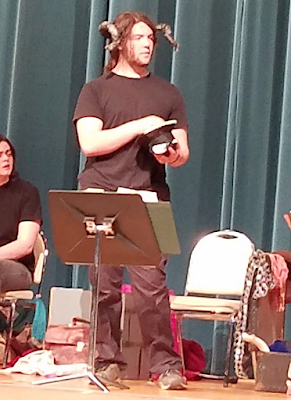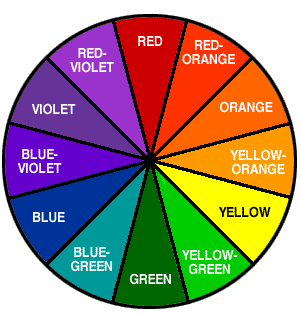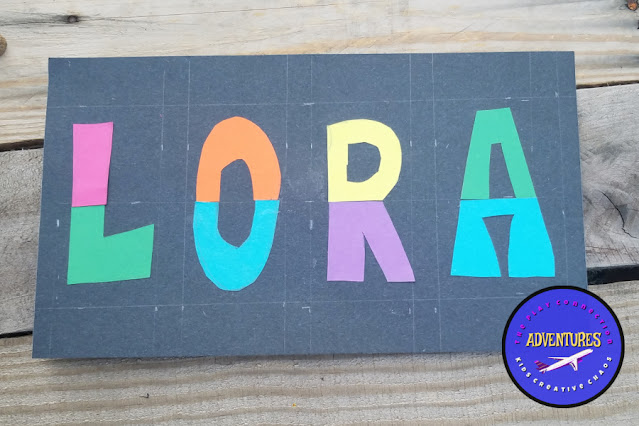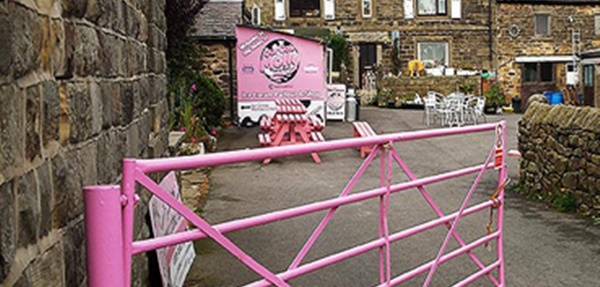How to Paint Like Henri Matisse
Paint Like Matisse
MATISSE ABSTRACT ART LESSON PLAN
Painting with Scissors and Paper Cut Outs: How to Paint Like Henri Matisse
COLOR THEORY COLOR SCHEME CUT PAPER LETTERS ART PROJECT
LEGEND Color Theory Letter Project
What are the Color Schemes?
How to Make Block Color Scheme LEGEND Letters with Bright Colored Paper
Essential Crafting Skills That Every Child Should Learn
Art and crafting activities have positive mental and physical benefits. Studies show that when children work together on craft projects, they build language skills as they create together, and more easily understand the perspective of others. Crafting also helps cultivate a child’s sense of achievement, building confidence and self-esteem through creation and experimentation.
In addition to learning important skills, supporting your child with creative outlets for free expression is good for their overall well being and health. Crafting is a wonderful way to relieve stress and offer space to learn to experiment and create. With a few simple supplies and an open mind, children will have a lot of fun while learning to enjoy crafting, all while developing a wide range of important skills. Here are some recommendations for teaching essential crafting skills to your children.
Junk Modeling
Open-ended art projects encourage the development of critical thinking skills. As a child makes a mental plan for what they want to make, they are building visual-spatial skills and exercising both right and left brain function. Designing models and sculpture helps children learn to evaluate shapes. An assortment of containers, wires, plastic, and random bits of household junk can be transformed into robots, toys, or mobiles. Provide glue and tape to help secure the pieces together, and paint and decorations for embellishing the model.
Help them turn a box into a pretend stove.
Sewing
Hand sewing tasks, like threading a needle or tying a knot, help improve hand-eye coordination and fine motor skills. As noted by the Philly Art Center, the small muscles in a child’s fingers, wrists, and hands are strengthened through arts and crafts activities, which helps to make learning to write easier. Older children may enjoy designing costumes or simple bags. Providing a sewing machine for children is a creative and fulfilling way to encourage artistic expression. Math skills, including spatial reasoning, measurement taking, and shapes are skills that can be learned through pattern making and design. Offer to host a fashion show for children to share and reflect on their creations.
What are the Cognitive Benefits of Crafts?
Making A Collage
Teaching crafting skills like cutting with scissors and drawing encourages the development of fine motor muscles. Suggest a collage theme and set a table with an assortment of papers, magazines, fabrics, leftover crafting supplies, and glue. Children will also learn about dimension and composition, gaining concentration skills as they assemble materials to create their art. Encourage children as they create unstructured work, focusing on the process and exploring the creation of art rather than the end product.
String Art
Children who engage with creative activities exercise and develop a creative mindset, learning there can be many ways to complete a task. With yarn, flat top nails or pins, and a bit of scrap wood or cardboard, kids will build skills like measuring and the steps involved in creating geometric and linear art. Patience and imagination will be stretched as they figure out how to transfer their ideas to the surface. Older children can be challenged to make elaborate templates or intricate designs with parabolic curves and repeating patterns. Dr. Kerry Freeman (Head of Art & Design Education, Northern Illinois University) adds that when kids engage in crafting and art for expression and are given the ability to take risks, they are developing lifelong innovation skills that will contribute to their success academically and as adults.
Learning essential crafting skills has so many benefits for your child, contributing to both their physical and emotional development as they grow. Plan to engage your child with age-appropriate creative activities every week. Enjoy spending family time together to teach these essential crafting skills to your child, it’s a wonderful opportunity to bond and create memories.
Recommended:
Pick a Collage Project from this list
Benefits of Extra Curriculars for Kids with Disabilities ad Special Needs
Visiting Sheffield With Your Kids
Thinking of traveling outside the United States? If you're looking for places to visit in the UK with family, Sheffield is a great option. In Sheffield, there are numerous indoor and outdoor activities for children and families. We've highlighted a few to help you plan your visit to Sheffield.
Kids of all ages are offered a wide range of fun activities and hands-on learning experiences at Sheffield's museums. At places like Kelham Island Museum, families can learn about the city's history via interactive displays. If you head a little out of town, you can also find animals, birds, reptiles, and insects from around the world. Families will enjoy an excursion to Sheffeld.
Cafes offering snacks and sandwiches at city parks and gardens and in most museums are family-friendly. Except for some, not all restaurants and bars in the city are family-friendly. Seen below, children will enjoy a trip to Our Cow Molly, Dairy Desserts.
Many people are choosing Sheffield as an excellent place to raise children and settle down. Many foreigners to the UK also prefer Sheffield to settle down. If this sounds like something you may want to do in the future, you should contact immigration lawyers in Sheffield and get started on the immigration paperwork and application process. The UK is very welcoming to highly skilled professionals and families.
Fun Facts about Sheffield:
Sandygate Stadium is the world's oldest football ground in Sheffield. Sheffield Hallam FC owns the land.
Sheffield is said to be the greenest city in Europe because of the numerous parks and greenspaces in the Sheffield.
Every year, the World Snooker Championships take place at the Crucible Theatre in Sheffield.
Sheffield United's stadium located at Bramall Lane was actually a cricket ground.
Helen Sharman (a Chemist from Sheffield) was the first British astronaut sent into space.
As you can see, Sheffield has a rich history and plenty of green spaces where you can find many activities and places to explore with your kids.
The Rivelin River
The Rivelin River is historic and has an excellent pathway to take a walk with your child. You can follow a trail that leads to old mills. There is a water park near the café to have some fun. Herons and other wildlife can be sighted here.
The Botanical Gardens
The Sheffield Botanical Gardens are very well-manicured green parks. The 19-acre Sheffield Botanical Gardens are home to more than 5,000 different species of plants. It's easy to roam around with your children and babies as the paths are made of tarmac, making it easy to operate a pram. Admission to the Botanical gardens is free, and you can also relax at the café once you're tired. The best times to visit are spring and summer when the flowers are in full bloom.
The Winter Gardens
Winter Gardens is a tropical oasis situated in Sheffield city centre. This Garden is amongst the largest temperate greenhouse in the country and is home to nearly 2,500 plant species. You can enjoy nature while your kids can safely walk the paths around the tropical trees.
Weston Park Museum
Weston Park Museum can teach you about culture and history. Founded in 1875, the main collections in this museum are free, and the displays are spectacular. There is a gallery that displays facts about Ancient Egypt. The Weston Park Museum is also known for being the home to Sheffield's social and natural history and archaeology.
Some of the notable highlights in this museum are the Bronze Age armor and art. Apart from this, you can also visit exhibits from other more prominent museums in the area. The museum has many guided tours to help your family understand the historical importance.
Weston Park
Weston Park is in the vicinity of Weston Park Museum. You can relax while your kid runs around in the park. It is a perfect place to have a post museum picnic.
Tropical Butterfly House Wildlife & Falconry Centre
The Tropical Butterfly House Wildlife & Falconry Centre houses a vast array of free-flying birds of prey, owls, reptiles, parrots, meerkats, farm animals, lemurs, and more. While the name does signify butterflies, you can also see the incredible falconry. Animal lovers can learn about otters (from the keepers), feed farm animals, pet a few lemurs, see the meerkats, and photograph as many butterflies as you want.
National Emergency Services Museum
Sheffield is home to the National Emergency Service Museum – the largest of its kind in the world. There are more than 50 vintage vehicles – police cars, fire engines, and ambulances with uniforms and gear and equipment for different eras. Families with kids can also avail the kids' fire engine rides (included in the ticket admission). If you're in the mood for a treat, you can also rent some of the vintage vehicles and take a tour of the city.
Recommended:
Vacation Tips from The Adventures of Kids Creative Chaos
Different Ways to Inspire Creativity in Your Child
As a parent, it's often challenging to see your child struggling, especially with their creative endeavors. It's essential to inspire children to explore their passions and interests. For young girls, especially, it can be difficult not to get pulled along by peers and lose sight of personal interests and passions. One way to help all kids find their voice and unique passion is to inspire their creative flow with lots of creative activities. Encourage your boys and girls to try something outside of their comfort zone!
This post contains Amazon and other affiliate links for your convenience.
 |
| School plays are a creative outlet that builds self-confidence and life long friendships. |
Inspiring creativity is a challenging tasks for most parents. Kids often choose not to do something simply because their parents have suggested it. Other times, they may feel insecure about trying something new. Try to encourage different creative pursuits as an outlet for self-esteem, fellowship, and mental health. Here are a few simple ways on how to cultivate your child’s creativity.
 |
| Mayhem in a school band production. |
Introduce kids to different types of crafts
Introducing your child to different ways to be creative allows their mind to develop away from the rigid confines of the creativity taught in many schools. It shows children the art of critical thinking and developing passions beyond the ordinary. Ask your child what interests them, but also give them options and ideas to inspire their creative and critical thinking.
If you wonder what this might look like, consider introducing your kids to different expressions of art that inspire creativity. For example, listen to music with them, discuss musical instruments and let them try one. Many cities have musical petting zoos or other opportunities to test an instrument.
Activities for Creative Expression
 |
| Jake in an adaptation of Brother's Grimm. |
You can also show your kids different forms of creative expression with painting and other arts and crafts. Allow them to play and explore. The earlier kids start experimenting with creativity, the better chance it will have an affect on their emotional stability and self-esteem. So, be sure to take your kids to museums, the theater, and to music concerts to inspire their senses and allow them to engage in all sorts of artistic pursuits. If you want to learn more about that, here's an article from Berkeley on why the arts matter.
On a side note, always remember to read with your children and encourage critical discussion on the book and its themes. A child with a curious mind will find it easier to access their personal creativity.
Surrealist Art Activity for Elementary Children
Give Kids creative gifts
Giving a child and exciting gift that isn't clothes or a video game, might inspire them to think creatively or get actively moving and making art. If you're struggling for ideas for your daughter, there are many gifts for girls to choose from that don't need to sit within the confines of gendered stereotypes. For example, you could buy her a zine-making kit. Firstly, making things helps kids to be more creative, but secondly, creating their own magazine can encourage kids to use their voice for good. Zines are a great way for children of all ages and genders to write and be creative. Click here for gift ideas that are targeting boys but can work for either gender. My daughter always hated to be excluded from toy cars, trains, and Transformers and my son loves to use hot pink as an accent color for sunglasses, hats, or other accessories. He gets a kick out of people giving him a hard time. Self-confidence at work!
Allow kids to explore
Finally, one of the most important ways to inspire creativity within your child is to allow them to explore on their own. For a child, exploring comes in many shapes and forms, from creative play to fashion. If you want your child to develop a unique identity and a sense of themselves, they have to learn what they like and don't like.
See how we encouraged our daughter to dress however she pleased.
Kids have to try out activities and get things wrong. Making mistakes is an excellent way for a child to learn, and this can also be applied to their creative endeavors. So, give your kids some paint or a dress-up box and encourage them to explore. Then, stay engaged in their exploration and find out more about what they are doing and why, but never force it- being an over zealous parent can backfire. Play it cool, and watch your kids have fun with the skills you helped to create.
Recommended:
Rhythm Discovery Center Indianapolis, Indiana
Get Musical Instruments on Amazon
Most Popular Post
-
Cardboard Toilet Tubes turned Holiday Hats How many rolls of toilet paper do you go though each month? We've got to recycle that ca...
Get Circle Time Handbook
Spark your child's interest!
Games for Preschoolers




































